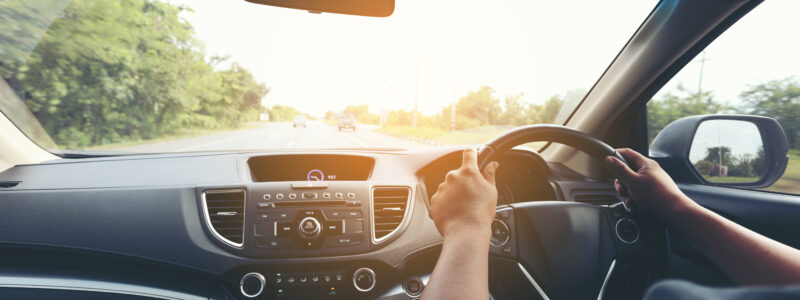Control and positioning (skills 5 to 7)

5. Controls and instruments
You need to concentrate on what’s happening around you when you’re driving, so operating the vehicle’s controls should become second nature. This includes:
- foot controls – the accelerator, clutch and brake pedals
- hand controls – the parking brake, steering wheel, indicators, headlights and gearstick
- other controls – the horn (you need to know when and for what reason you can legally use it), windscreen wipers, demister and heated windows.
You should be aware of any controls specific to the car you’re driving.
You must also know the meaning and function of each element of the instrument panel.
6. Moving away and stopping
You have to move away and stop every time you drive, and that’s why it’s so important to make sure that you know how to move away and stop safely.
You should:
- be able to move away and stop safely on level ground, on a hill, at an angle and straight ahead
- use the mirrors – signal – manoeuvre (MSM) and position – speed – look (PSL) routines
- observe what’s happening around you and be aware of any blind spots
- co-ordinate your use of the accelerator, clutch and footbrake so that you move off and slow down safely and smoothly
- use the parking brake and steering competently
- know where and when to look, what to look for and how to act safely on what you see
- be able to identify suitable stopping places
- know where and when to signal
7. Safe positioning
Make sure that you drive in the correct position for the road on which you’re travelling. It’s important not only for your safety but also for the safety of other road users.
You should be able to:
- use the MSM and PSL routines
- show good lane discipline by planning ahead and moving into the correct lane in good time
- adapt their road position to suit the road width and traffic conditions
- keep a safe position during normal driving, especially around bends
- take up the correct position on a one-way street
You must also understand:
- how other vehicles, such as lorries and cyclists, need to position themselves
- what clearance you need to leave when passing stationary vehicles, cyclists or obstructions
Learn more about these skills
Previous page:
Not feeling completely prepared?
Only take your driving test if you’re feeling completely prepared.
You can move your driving test back if you’re not feeling quite ready yet.
It’s free to change your appointment time, as long as you do it at least 10 full working days (Mondays to Saturdays) before your test.